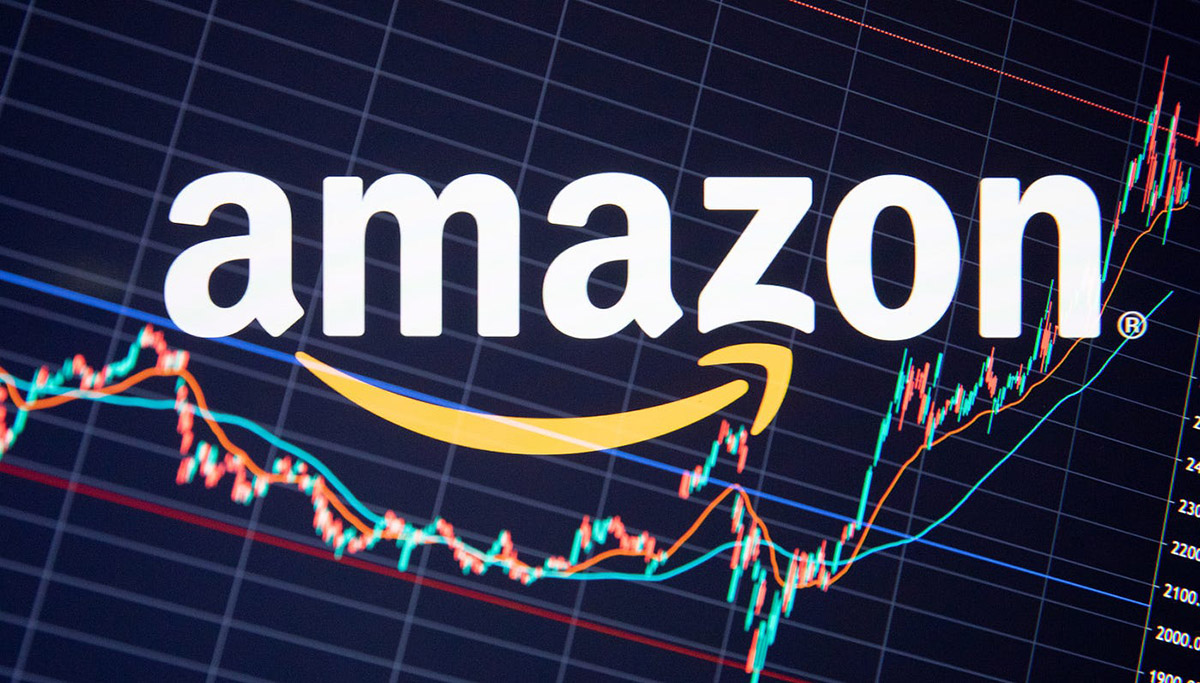

Finance
Why Are Amazon Buyouts So Expensive
Modified: December 30, 2023
Discover why Amazon buyouts are so expensive and delve into the intricate world of finance behind these lucrative acquisitions.
(Many of the links in this article redirect to a specific reviewed product. Your purchase of these products through affiliate links helps to generate commission for LiveWell, at no extra cost. Learn more)
Table of Contents
Introduction
Amazon, the e-commerce giant founded by Jeff Bezos, has become a dominant force in the retail industry. With its vast customer base, extensive product range, and innovative technologies, it has reshaped the way people shop and disrupted traditional brick-and-mortar stores. One of the strategies employed by Amazon to maintain its market position and expand its business is through strategic acquisitions.
In recent years, there has been a surge in the number of high-profile and expensive buyouts carried out by Amazon. This trend has sparked curiosity and raised questions about why these buyouts come with such hefty price tags. In this article, we delve into the reasons behind the expensive nature of Amazon’s acquisitions and explore the potential risks and benefits associated with them.
Throughout its existence, Amazon has built a reputation as a customer-centric company that focuses on long-term growth rather than short-term profitability. This customer-centric approach has allowed Amazon to gather an enormous amount of data on consumer behavior and preferences, enabling the company to offer personalized recommendations and a seamless online shopping experience.
Furthermore, Amazon’s commitment to innovation, as exemplified by its development of technologies such as AI-powered voice assistant Alexa and its foray into the grocery industry with its acquisition of Whole Foods Market, has solidified its position as a pioneer in the retail space.
Amazon’s massive customer base, innovative technologies, and unparalleled data insights make it an attractive prospect for companies looking for an exit or seeking to partner with a global powerhouse. These factors contribute to the high demand and subsequently drive up the acquisition costs for potential buyers, including Amazon.
In the next section, we will explore the specific factors that contribute to the expensive nature of Amazon’s buyouts.
The Power of Amazon
Amazon’s dominance in the e-commerce industry is undeniable. With an unrivaled market share and a vast customer base, the company has positioned itself as a force to be reckoned with. The power of Amazon lies in several key factors that have contributed to its success and influence.
First and foremost, Amazon’s extensive product range is a major driver of its power. Customers can find virtually anything they need on the platform, from electronics to home decor to books. This vast selection ensures that Amazon has something to offer to everyone, attracting a wide range of customers and boosting its revenue streams.
In addition to its product range, Amazon’s commitment to convenience sets it apart from its competitors. Through its Prime program, Amazon offers free and fast shipping, as well as access to a variety of entertainment options, to its members. This level of convenience has cultivated a loyal customer base that relies on Amazon for their everyday needs.
Another factor that contributes to Amazon’s power is its marketplace model. Amazon allows third-party sellers to list and sell their products on its platform, facilitating a diverse and competitive marketplace. This not only expands the product offerings but also creates an ecosystem of sellers who rely on Amazon’s infrastructure and customer reach to grow their businesses.
Furthermore, Amazon’s technological prowess plays a significant role in solidifying its power. The company invests heavily in cutting-edge technologies such as artificial intelligence, machine learning, and robotics. These technologies enable Amazon to streamline its operations, enhance the customer experience, and stay ahead of its competitors.
Moreover, Amazon’s data-driven approach gives it a unique advantage in the market. The company collects vast amounts of customer data, allowing it to analyze customer behavior, preferences, and trends. This data is leveraged to provide personalized recommendations, improve search results, and optimize marketing strategies, ultimately leading to increased sales and customer satisfaction.
Finally, Amazon’s ability to adapt and expand into new markets contributes to its power. Over the years, Amazon has successfully diversified its offerings beyond e-commerce. The acquisition of Whole Foods Market allowed the company to enter the grocery industry, while the development of voice assistant Alexa opened up opportunities in the smart home market. These strategic moves have expanded Amazon’s reach and solidified its position as an industry leader.
Given its vast customer base, extensive product range, commitment to convenience, marketplace model, technological advancements, data insights, and ability to adapt, it is no surprise that Amazon holds tremendous power in the retail industry. This power positions Amazon as an attractive partner or acquirer for companies looking to benefit from its reach, resources, and expertise.
Factors Driving Expensive Buyouts
When it comes to Amazon’s acquisitions, there are several factors that contribute to the high price tags associated with these buyouts. Understanding these factors is crucial to grasp why Amazon is willing to pay a premium to acquire certain companies and how it maintains its competitive edge.
One key factor is the strategic value that these acquisitions bring to Amazon. By acquiring companies that offer unique technologies, patents, or expertise, Amazon can enhance its own capabilities and stay ahead of its competitors. For example, the acquisition of Ring, a smart home security company, allowed Amazon to enter the home security market and integrate its products with Amazon’s Echo devices.
Another driving force behind expensive buyouts is Amazon’s focus on expanding its customer base and market reach. By acquiring companies with strong customer loyalty and a significant market presence, Amazon can tap into new customer segments and expand its user base. This not only increases its revenue streams but also strengthens its position as a dominant player in the market. The acquisition of Zappos, an online shoe and clothing retailer, is a prime example of this strategy.
Additionally, Amazon’s acquisitions are often motivated by the desire to gain exclusive access to certain products or services. By acquiring companies that offer unique or highly sought-after products, Amazon can prevent its competitors from accessing those offerings. This exclusivity gives Amazon a competitive advantage and further solidifies its market position. The acquisition of PillPack, an online pharmacy, is a clear example of how Amazon aims to enter and dominate new markets.
Furthermore, Amazon’s acquisitions are driven by its commitment to innovation and staying at the forefront of technological advancements. By acquiring companies with cutting-edge technologies or innovative business models, Amazon can integrate these innovations into its existing operations and improve its customer experience. The acquisition of Twitch, a live streaming platform for gamers, is a testament to Amazon’s dedication to embracing new technologies.
It is also worth noting that the competitive landscape plays a role in driving up the cost of Amazon’s acquisitions. High demand for promising companies and the potential threat they pose to Amazon’s competitors can result in bidding wars. This competition among potential acquirers can drive up the price and make these buyouts more expensive.
Lastly, the financial strength of Amazon allows the company to be more aggressive in its acquisition strategy. With deep pockets and a strong cash flow, Amazon has the financial resources to pursue expensive acquisitions without compromising its financial stability. This financial muscle gives Amazon an advantage over other potential acquirers and allows it to outbid competitors in the acquisition process.
Considering these factors, it becomes clear why Amazon’s buyouts come with hefty price tags. The strategic value, market expansion opportunities, exclusive access to products, commitment to innovation, competitive landscape, and financial strength all contribute to the high costs associated with Amazon’s acquisitions.
Competitive Landscape
Amazon operates in a highly competitive landscape where various players strive to capture market share and attract customers. Understanding the competitive dynamics is crucial to grasp the rationale behind Amazon’s expensive acquisitions and its efforts to maintain its position as a market leader.
One of the biggest competitors for Amazon is traditional brick-and-mortar retailers who have undergone significant transformations to adapt to the digital age. Companies like Walmart and Target have invested heavily in their e-commerce capabilities to compete with Amazon. They leverage their existing physical stores to provide customers with alternative shopping options, such as click-and-collect or same-day delivery services.
Another major competitor is Alibaba, the Chinese e-commerce giant. Alibaba dominates the Chinese market and has expanded its presence globally. While Amazon has a stronghold in western markets, Alibaba’s expertise and extensive network in the Asian market pose a significant challenge. This competition drives both companies to seek strategic acquisitions that can provide them with a broader market reach.
Technology companies also pose a threat to Amazon’s dominance. Google and Apple, for example, have their own digital products and services that compete with Amazon’s offerings. Moreover, Google’s search engine dominance and Apple’s loyal customer base give them an edge in reaching and attracting customers. These competitors have the financial resources and technological capabilities to disrupt the e-commerce and digital marketplaces.
Furthermore, niche players and startups with innovative business models present a constant source of competition for Amazon. These companies often specialize in a particular product category or offer unique services that resonate with targeted customer segments. By acquiring these niche players, Amazon can not only eliminate competition but also gain access to their customer base and expertise.
The competitive landscape also extends to logistics and delivery services. UPS and FedEx are major players in this industry, providing shipping and delivery services to various e-commerce companies, including Amazon. By investing in its own logistics infrastructure and pursuing acquisitions in the logistics sector, such as the purchase of Whole Foods Market for its grocery delivery capabilities, Amazon aims to reduce its reliance on external delivery services and improve its overall efficiency.
Lastly, the rise of direct-to-consumer (D2C) brands adds another layer of competition. These brands offer unique products and have direct relationships with their customers, bypassing traditional retail channels. D2C brands often rely on digital marketing and social media to reach their target audience, posing a threat to Amazon’s position as the primary destination for online shopping.
Considering the competitive landscape, Amazon’s acquisitions play a vital role in maintaining its market position and staying ahead of its rivals. By strategically acquiring companies that bring unique technologies, loyal customer bases, or niche expertise, Amazon aims to strengthen its competitive advantage and defend its market share against both traditional and emerging competitors.
Acquisition Strategy
Amazon’s acquisition strategy plays a pivotal role in its growth and expansion plans. Through strategic acquisitions, the company aims to bolster its market position, enhance its capabilities, and enter new markets. Understanding Amazon’s acquisition strategy sheds light on why the company is willing to invest heavily in expensive buyouts.
Firstly, Amazon’s acquisition strategy is centered around acquiring companies with innovative technologies or unique products. By bringing these technologies or products under the Amazon umbrella, the company can integrate them into its existing operations and enhance its overall offering. This approach allows Amazon to stay at the forefront of technological advancements and meet evolving customer demands. The acquisition of companies like Ring, Twitch, and PillPack exemplify Amazon’s focus on securing cutting-edge technologies and differentiated offerings.
Secondly, Amazon seeks to expand its customer base and market reach through strategic acquisitions. By acquiring companies with a large, loyal customer base, Amazon can tap into new customer segments and strengthen its market presence. The acquisition of companies like Whole Foods Market, Zappos, and Audible has helped Amazon broaden its customer base and increase its revenue streams.
Furthermore, Amazon’s acquisition strategy is guided by the goal of eliminating competition and gaining a competitive advantage. By acquiring companies that directly compete with Amazon or pose a threat to its dominance, the company can solidify its position and prevent potential disruptors from gaining traction. This approach is evident in the acquisition of Diapers.com, which allowed Amazon to eliminate a strong competitor in the baby products market.
Additionally, Amazon’s acquisition strategy encompasses entering new markets and verticals. By acquiring companies with expertise in specific industries, Amazon can quickly establish a presence and leverage their knowledge to drive growth. Examples of this approach include the acquisitions of Whole Foods Market, which allowed Amazon to enter the grocery industry, and PillPack, which enabled Amazon to expand into the online pharmacy sector.
Moreover, Amazon’s acquisition strategy involves acquiring companies that offer synergies with its existing operations. This allows Amazon to leverage its existing infrastructure, customer base, and distribution capabilities to maximize the value of the acquired companies. By aligning business models and integrating operations, Amazon can achieve operational efficiencies and cost savings. The acquisition of companies like Souq.com, an e-commerce platform in the Middle East, highlights Amazon’s focus on leveraging synergies.
Lastly, Amazon’s acquisition strategy is characterized by swift execution. The company moves quickly and decisively to secure deals, often outbidding potential competitors. This proactive approach allows Amazon to strengthen its market position and prevent others from benefitting from the strategic fit of the target companies.
Overall, Amazon’s acquisition strategy is driven by the goal of strengthening its capabilities, expanding its customer base, eliminating competition, entering new markets, leveraging synergies, and maintaining its position as a market leader. By strategically acquiring companies that align with these objectives, Amazon aims to solidify its dominance and continue its growth trajectory.
Potential Risks and Benefits
While Amazon’s acquisitions come with numerous benefits, they also carry certain risks. It is crucial to consider both sides of the equation when evaluating the impact of these buyouts.
One of the primary benefits of Amazon’s acquisitions is the potential for market expansion and revenue growth. By acquiring companies with a large customer base or a strong presence in specific markets, Amazon can tap into new customer segments and increase its revenue streams. This provides opportunities for cross-selling, upselling, and expanding its product offerings.
Furthermore, acquisitions can bring technological advancements and expertise to Amazon, enhancing its capabilities and driving innovation. By integrating cutting-edge technologies acquired through buyouts, Amazon can improve its customer experience, streamline operations, and stay ahead of its competitors. These acquisitions enable Amazon to access new ideas, talent, and resources that can fuel its continued growth.
Acquisitions also offer Amazon the opportunity to gain exclusive access to products or services that are in high demand. By acquiring companies that offer unique or highly sought-after offerings, Amazon can maintain a competitive advantage by preventing its competitors from accessing those products or services. This exclusivity strengthens Amazon’s market position and increases its customer loyalty.
On the other hand, there are potential risks associated with Amazon’s acquisition strategy. One major risk is the integration of acquired companies into Amazon’s existing operations. Integrating different cultures, systems, and processes can be challenging, and if not executed properly, it can result in disruptions and inefficiencies. Ensuring a smooth integration process is key to maximizing the benefits of the acquisition.
Another risk is the financial impact of expensive acquisitions. Acquiring companies at high price points can strain Amazon’s financial resources and impact its profitability in the short term. It is essential for Amazon to carefully evaluate the potential return on investment of each acquisition and manage its financial position accordingly.
There is also the risk of cannibalization or dilution of the acquired company’s brand identity. If the integration process is not managed effectively, the acquired company’s brand and reputation could suffer. Maintaining the unique qualities and value proposition of the acquired company while leveraging Amazon’s resources and customer base is crucial to mitigate this risk.
Moreover, antitrust and regulatory concerns can arise due to Amazon’s dominant market position and the size of its acquisitions. Regulatory authorities may scrutinize Amazon’s acquisitions to ensure fair competition and prevent monopolistic practices. The company must navigate these concerns and comply with applicable regulations to avoid any legal implications.
Despite the risks, the potential benefits of Amazon’s acquisitions, such as market expansion, technological advancements, exclusive access to products, and increased revenue streams, outweigh the potential downsides. By carefully managing the integration process, evaluating the financial impact, and remaining mindful of regulatory considerations, Amazon can mitigate risks and harness the full potential of its acquisitions to secure its position as a market leader.
Conclusion
Amazon’s aggressive acquisition strategy is driven by its desire to maintain its dominance in the retail industry, expand its market reach, and stay at the forefront of technological advancements. The expensive nature of these buyouts can be attributed to various factors, including the strategic value, market expansion opportunities, exclusive product access, commitment to innovation, competitive landscape, and financial strength of Amazon.
By strategically acquiring companies with innovative technologies, a loyal customer base, or expertise in specific industries, Amazon aims to enhance its capabilities, broaden its customer reach, eliminate competition, enter new markets, leverage synergies, and maintain its position as a market leader. These acquisitions offer benefits such as revenue growth, access to new technologies, and exclusive product offerings.
However, Amazon’s acquisition strategy also carries potential risks, including challenges in integrating acquired companies, financial strains, dilution of brand identity, and regulatory scrutiny. It is crucial for Amazon to address these risks effectively and ensure a seamless integration process to maximize the benefits of its acquisitions.
In conclusion, Amazon’s expensive buyouts are a testament to its commitment to innovation, customer-centric approach, and ambition to solidify its dominance in the retail industry. The company’s acquisition strategy, guided by market expansion, technology advancement, and competitive advantage, positions it for continued growth and adaptability in an ever-evolving marketplace.














